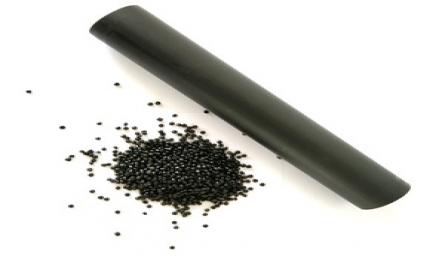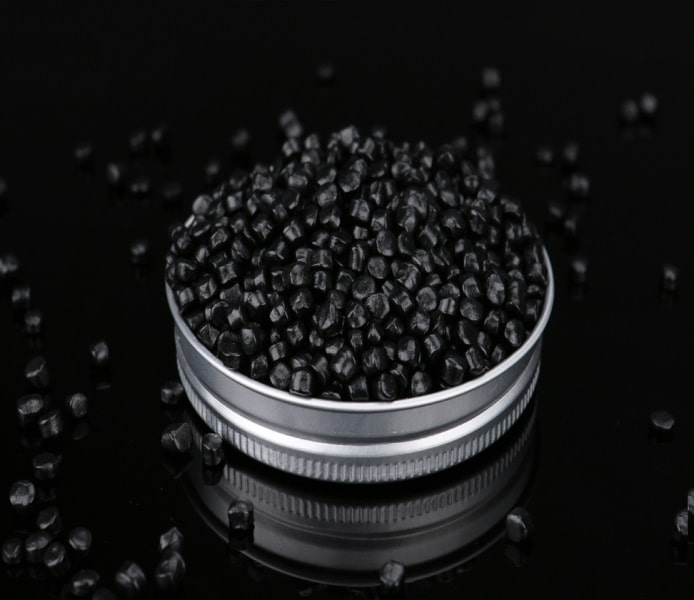In selecting pipes for different projects, designers, employers, and contractors are always looking for materials that offer the best performance in terms of durability, reliability, and economic efficiency. Polyethylene pipes, particularly single-wall pipes, are a suitable option for various piping applications, including the distribution of natural gas, municipal water and sewage, industrial facilities, marine installations, mining, landfill, and electrical and telecommunications ducts. These pipes are used in overhead, underground, surface, floating, and marine installations and, due to their desirable features, are utilized in many projects.
Polyethylene pipes are produced using the extrusion method. However, pure polyethylene alone cannot produce durable and reliable products and usually requires the addition of various additives. These additives include antioxidants, light stabilizers, and other processing aids that help improve the properties of the base polymer. For special applications, specific additives are also added to the polymer to impart special properties.
One of the most important additives for polyethylene pipes is carbon black. Ultraviolet (UV) light is one of the destructive factors for polymers. Exposure of plastic products, especially polyethylene pipes, to UV light, along with oxygen and ozone, can lead to the chemical degradation of the polymer structure and reduce their mechanical properties and service life. To increase resistance to UV light, pigments are added to the polymer, which can absorb UV radiation and prevent it from penetrating the polymer structure. Among the different pigments, carbon black is recognized as the best option for increasing resistance to UV light. The presence of 2-3% carbon black in the polymer can increase UV resistance by up to 15 times.
To achieve this, pipe manufacturers can use grades of polyethylene containing carbon black, which are supplied by petrochemical companies, or purchase natural (non-carbon-black) polyethylene and then add the appropriate percentage of carbon black to the final product using carbon black masterbatches. Carbon black masterbatches are supplied as concentrated carbon black and are combined with the base polymer during pipe production. In Iran, the use of masterbatches is more common due to ease of production and quality control.
Properties of Polyethylene Masterbatch
Polyethylene masterbatches have specific features that depend on their application and formulation. These features include the following:

-
The Effect of Additive Percentage Composition: The characteristics of polyethylene masterbatches are highly dependent on the percentage composition of additives, fillers, processing aids, and the base resin. This percentage composition can have a significant impact on the quality and performance of the masterbatch.
Cost Reduction: One of the main advantages of polyethylene masterbatches is their ability to reduce production costs. These masterbatches can help lower the costs of raw material production and are therefore highly regarded in the industry.
Easy Processability: Polyethylene masterbatches have the characteristic of easy processability. This feature allows manufacturers to complete the production process without significant issues.
Various Types of Masterbatches: Polyethylene masterbatches include various types, including:
-
Calcium Carbonate Masterbatch: For increasing volume and reducing costs.
-
Functional Masterbatches: For improving adhesion and other properties.
-
Flame Retardant Masterbatches: For enhancing fire resistance.
-
Color Masterbatches: For adding different colors to final products.
-
Processing Masterbatches: For improving the production process and final product properties.
Dependence on Formulation: The characteristics of polyethylene masterbatches are highly dependent on the formulation and production process. With changes in the formulation, the characteristics of the masterbatch may also change.
Compatibility with Different Bases: Polyethylene masterbatches can be used in various base resins and can be produced based on customer requirements and the type of base used in the product.
These characteristics make polyethylene masterbatches a suitable choice for various industrial applications and help manufacturers produce their products with high quality and at a reasonable cost.
What Are the Advantages of Carbon Black Masterbatch?
The advantages of carbon black masterbatch in the production of polyethylene pipes and other plastic products include:
Increased Resistance to Ultraviolet (UV) Light: One of the main advantages of carbon black masterbatch is its ability to enhance the polymer’s resistance to UV light. Carbon black acts as a UV-absorbing pigment and, by absorbing UV radiation, prevents the degradation of the polymer structure, thereby increasing the product’s service life.
Improved Mechanical Properties: Carbon black can help strengthen the mechanical properties of polyethylene pipes. By adding carbon black to the polymer, properties such as tensile strength, impact resistance, and product hardness are improved.
Cost Reduction: Due to the low price of carbon black and the small amount required, carbon black masterbatch can reduce production costs. Using masterbatch instead of adding carbon black separately is more economical and practical.
Ease of Production Process: Carbon black masterbatches are specifically designed for ease of use in the production process. These masterbatches are uniformly dispersed and blend with the base polymer, reducing issues related to uneven distribution of carbon black in the final product.
Better Quality Control: Using carbon black masterbatch allows for more precise control over the amount of carbon black added to the final product. This ensures that the product’s properties meet the desired standards.
Increased Resistance to Weathering Conditions: In addition to UV resistance, carbon black can also improve the pipe’s resistance to weathering conditions and other environmental factors, such as oxidation and chemical degradation.
Compatibility with Various Polymers: Carbon black masterbatches are generally compatible with various types of polymers and can be used in the production of polyethylene pipes and other plastic products.
Environmental and Safety Aspects: Due to their stable characteristics and lack of harmful emissions into the environment, carbon black masterbatches are considered safer. Carbon black is naturally a stable and non-toxic additive that helps protect the environment.
Overall, carbon black masterbatch, by improving UV resistance, enhancing mechanical properties, reducing costs, and facilitating the production process, has become a suitable choice for use in the production of polyethylene pipes and other plastic products.
-



